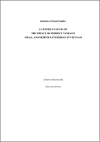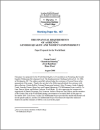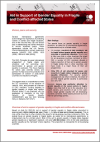FOUND 203
This paper by the Commonwealth Secretariat (1999) provides a rationale for the strategic goals of the Commonwealth Gender Budget Initiative at the national level and highlights the need for integrating a gender perspective in macroeconomic policies and budgets.
The publication is comprehensive review of ACFODE of Uganda's gender budgeting experiences at the local level. Among some of the topics discussed in the newsletter are ACFODE's initiatives, mission, activities, lessons learnt, local level gender budget research and more.
The report provides a snapshot of the landscape of global human rights grantmaking in 2014.
This paper attempts to briefly examine the level of readiness/preparedness of Pacific Island countries (PICs) to advance the process of incorporating gender-responsive budget initiatives into national policies and public expenditure management systems.
This paper on SMEs in Vietnam, looks into biases that help explain the higher costs and lower profits of female-owned enterprises. It brings together gender analysis, small scale enterprise analysis, and gender budget analysis in a development context by demonstrating that gender mat
The paper provides a comprehensive overview and guide to complex issue of linkages between aid and gender equality.
The EC/UN Partnership has reviewed the extent to which commitments to women's security and peacebuilding needs have been financed by Official Development Assistance (ODA) in four different post-conflict situations: the Democratic Republic of Congo, Nepal, Bougainville (Papua New Guinea), and Aceh (I
The report prepared by the OECD DAC provides statistics on aid focused on gender equality and women's empowerment extended by DAC members.
The present study is a contribution to mark the 10th anniversary of the adoption of UNSCR 1325, and provides an overview of DAC members' funding targeted to gender equality in fragile and conflict-affected states.
The main goal of the Albanian Time Use Survey is to develop nationally representative estimates of how people divide their time of various life activities. The main objectives to be achieved through the time use survey were:








